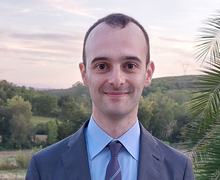Open-source tools for energy applications are growing in quality and number but their adoption still lacks behind. In the talk, an overview of the current status on features provided by open-source tools compared to their in-house counterparts, and possible synergies to foster open-source adoption using a community approach. Practical examples by the PyPSA and PyPSA meets Earth initiative for global energy planning will be discussed in detail.
Energy transition is a major challenge that no one can tackle alone. Collaboration across national boundaries and sectors and within civil society is necessary and open data and open-source software are promising tools to identify costs and opportunities and accelerate the uptake of net‑zero technologies, especially in developing countries where resources are often scarce. However, except for few notable institutions, in-house software and data dominate industry and policy decision making in energy matter.
Many large entities have been historically reluctant to use open-source software and open data, for concerns including data quality, technical support on open tools, lack of features, or reliability of results. Nevertheless, the open community has been developing several tools for various energy applications, which can meet many needs by utilities, policy makers and industry. However, despite the open-source alternative, often closed software is still the standard approach.
The presentation will describe the status of open data and open-source tools adoption in the energy sector will be discussed, including a proposal on how to fill the missing steps using community of communities: open-source communities shall help each other towards practical adoption. Focus will be given on the comparison of features provided by selected in-house models and the open-source counterpart, including the examples by PyPSA and PyPSA meets Earth initiatives that actively promote open data and open-source tools for global energy planning. The initiatives have demonstrated that fully open energy modelling, from the data till the solver, is already possible at Continental scale with reasonable accuracy, even in areas where data access is generally more difficult, such as at African level. In conclusion, the major lessons learnt from open energy modelling initiatives will be drawn, highlighting synergies among open-source communities to foster adoption.
